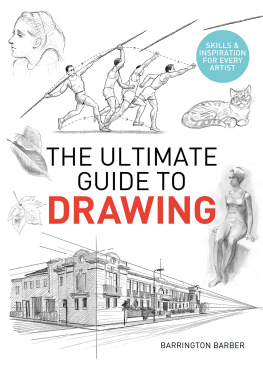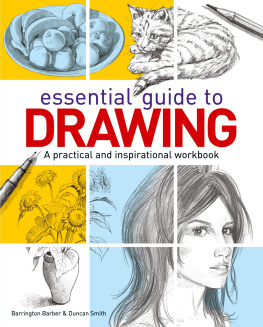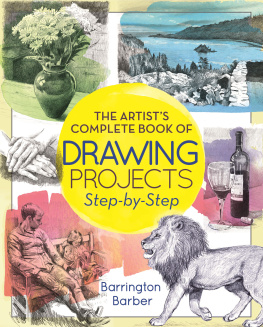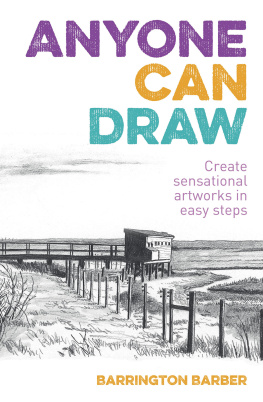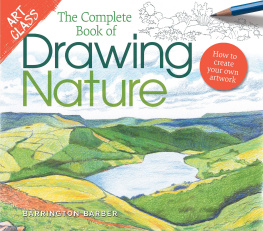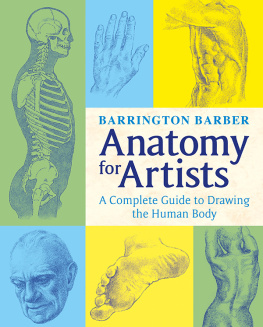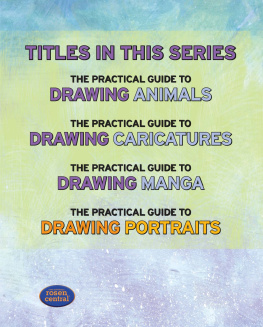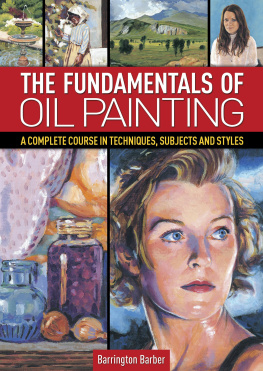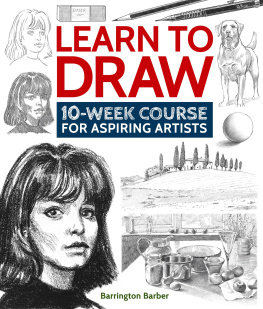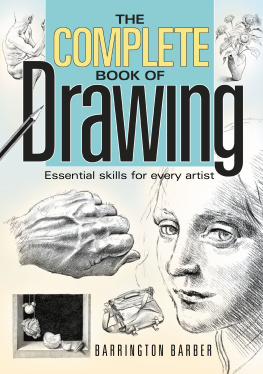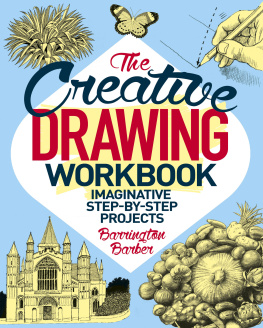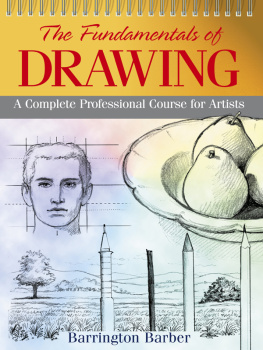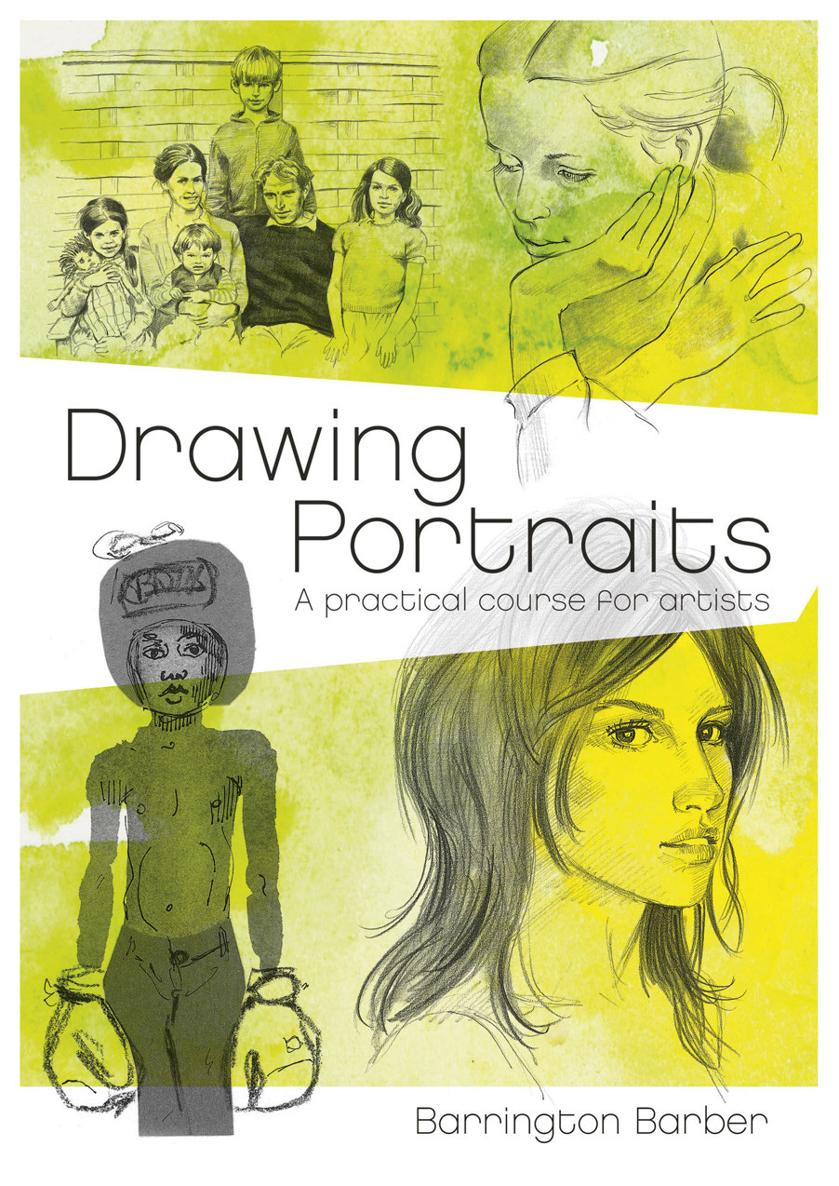Drawing Portraits
A practical course for artists
Barrington Barber
Contents
Introduction
First Steps
Styles and Techniques
Composition
Group and Family Portraits
Life Through the Ages
Dress
Animals in Portraits
Furniture and Props
Symbolism
Self-portraits
Caricature
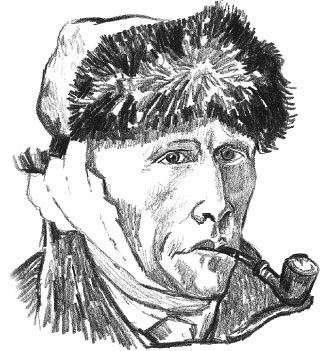
Introduction
What is a portrait? It is said that Picasso produced a Cubist portrait of a friend and when this was shown to Matisse he could not identify the person. Picasso then stuck a moustache onto the picture and Matisse could immediately see the likeness. This story exemplifies a fundamental of portraiture: no matter how far from an exact likeness a drawing may be, it must contain some recognizable form of the person. In order to capture this you will need to spend a lot of time in direct observation, noting the particular image of a human being that your subject represents.
How much you should flatter or be brutally honest with your subject when drawing is a perennial question. If they, like Thomas Cromwell in the century, want a portrait warts and all then the more objective you can be the better. However, very few people are honest enough about their own appearance to be able to live with the consequences of this approach, and so most portrait artists try to give the best possible view of the sitter. This may mean altering the light effects, changing the position of the head slightly, getting the sitter to relax, and employing other small ways of helping to ease tension out of the face and bring some agreeable element into prominence. Fortunately, most people have some good feature that can be the focal point of a portrait, allowing the artist to slightly reduce the importance of a tense mouth, a weak chin or rather protruding ears or nose. The ravages of time have also to be taken into account, although lines, creases or sagging flesh can be slightly softened to give a more acceptable version which is still recognizable.
Throughout this book I have tried to choose portraits which are sometimes famous and sometimes unknown but always interesting. You will find a range of approaches, and within the examples from each valuable lessons to absorb and take from. There isnt a portrait in this collection that cant teach us something about the way to approach depicting the features of your friends, family, acquaintances and even complete strangers. What I hope you will also come to realize is that although the measurable differences between all the faces portrayed are really very minute, the appearances are immensely varied. The human face has an extraordinary ability to mirror all the expressions and emotions capable of recognition. It is this facility which artists have striven for generations to explore in myriad ways.
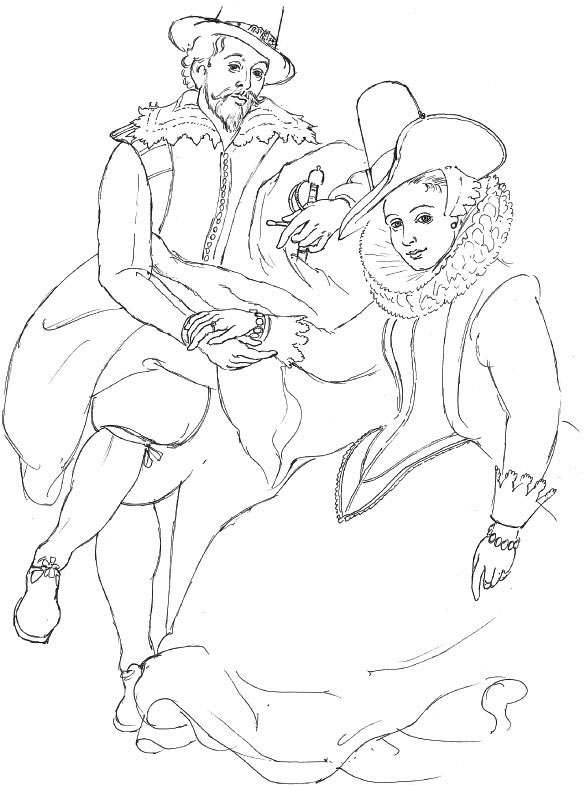
What comes out of this exploration does, of course, depend on the skill of the artist. The only way to reach the level of skill required to produce good portraits is to practise drawing. The more you practise, the better you will get. If you cant regularly practise drawing faces, any type of drawing is a valid way to increase your skills. Even an object of still life, such as a pot, can be approached as if you were drawing a portrait. This would mean looking for the specific characteristics of the pot in the situation you have devised. The characteristics will only be evident when the pot is in that particular position, with that particular lighting and related to those particular surroundings. Change the situation, the lighting and the surroundings and you will have a different portrait. This is why so many artists find portraiture endlessly fascinating. There really is no limit to the possibilities for expression it offers.
First Steps
In this first section we look at the most important aspects of drawing portraits. Themes are presented in the order in which you will tackle them, so that even if you have never done a portrait before you will know how to proceed. You will notice that much emphasis is placed on the structure of the head and the features. The main shape of the head is vital because if you ignore this the resulting drawing will never really catch the qualities of the sitter. If you are very new to portrait drawing, you will find it beneficial to practise drawing just that shape accurately if loosely and lightly.
There is an objective shape that a particular face will have which can be studied until correctly drawn. How each lump or bump in each feature is related to the whole shape and whether the curves are greater or smaller can make a lot of difference to the final result. There is no substitute for careful observation. If you practise looking at peoples faces it will enhance your ability to draw the shapes in front of you. Changing light conditions and expressions give subtle variations to the features. You have to decide exactly which of these variations to include in your drawing.
Finally, we look at a range of materials, to give you a wide spectrum of options. What you discover for yourself through trial and error will stay with you and inform your work in the future.
The angle of the head
The most distinctive part of any portrait is the face, which is where the likeness and characteristics of the sitter can be shown most easily. This is your starting point. The head should be dealt with as a whole so that the face has a solid basis. Only so many views of the head are possible for a portrait to be recognizable.
The position you choose for the head will make a lot of difference to the end result, and whether people recognize your subject. We will start with the most common, and then assess the workable alternatives.
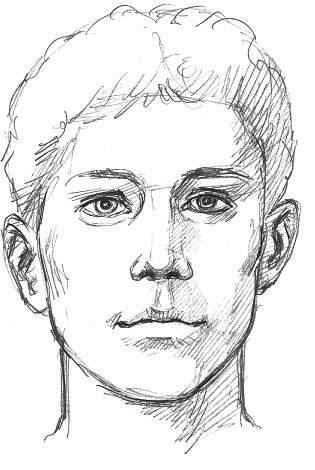
Full face, from the same eye level as the artist, is excellent for capturing the expression in the eyes, but the shape of the nose is less obvious.
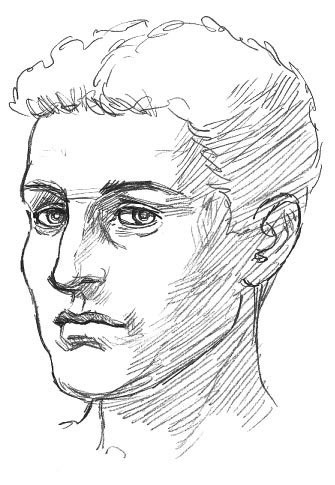
The three-quarter view is probably the most popular position. It gives a clear view of the eyes and enough of the shape of the nose to give a good likeness.
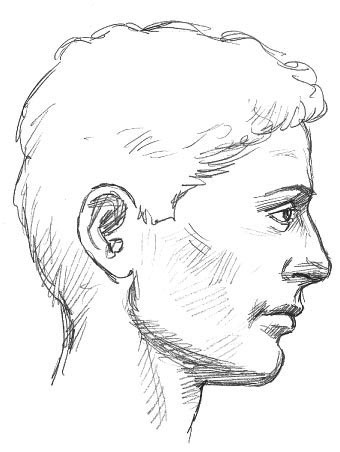
The head seen in profile allows clear definition of the features. Generally, though, portraits from this angle are less expressive, because the eyes are not clearly seen.
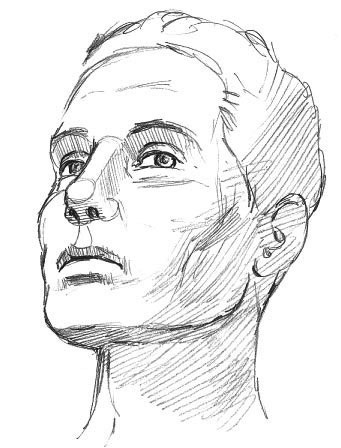
The head tilted back a little gives an air of coolness, even haughtiness, but its worth considering.
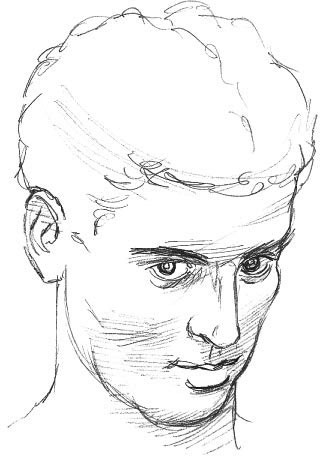
The head tilted forward can give a rather quizzical or defensive expression.


